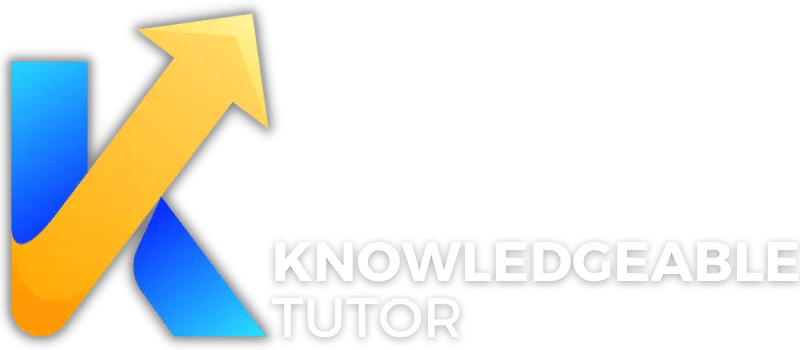Using Social Media for Your Online Tutoring Business

Fanie Naude
CEO & Founder of Knowledgeable Tutor, Buznet Direct, YMC & Naude Consulting

Fanie Naude
CEO & Founder of Knowledgeable Tutor, Buznet Direct, YMC & Naude Consulting
In This Article

Introduction: The Symbiotic Relationship Between Social Media and Online Tutoring
In the digital age, the boundaries between education and technology are increasingly blurred. Social media, once considered a mere distraction, has evolved into a potent tool for educational engagement. As the renowned media theorist Marshall McLuhan aptly stated, "The medium is the message." In the context of online tutoring, the medium—social media—becomes an extension of the educational message, enriching the tutoring experience for both educators and learners.

Why Social Media? The Data-Backed Rationale
The Statistical Landscape
According to EdTechReview, 59% of students who use social networking talk about educational topics online. Furthermore, 50% of those who discuss education online are specifically focused on their learning experiences. These statistics are not mere numbers; they are a testament to the growing influence of social media in the educational sphere.
The Benefits Unveiled
Social media offers a plethora of benefits for online tutors, as outlined by ChampionTutor. These include real-time interaction with students, quick feedback mechanisms, and a broader reach beyond geographical limitations.
Cost-Effectiveness
Online tutoring itself is a cost-effective model, saving up to 60% on tuition costs compared to traditional tutoring, as reported by Gitnux Blog. When you integrate social media into this model, the cost-effectiveness is amplified. Social media platforms are generally free to use and offer paid advertising options that are often less expensive than traditional marketing channels.
Teacher Adoption Rates
It's not just students who are active on social media; 41% of teachers have used social media as an educational resource in their classroom, according to another Gitnux study. This indicates a growing acceptance among educators, making it a ripe field for online tutors.
Tables
| Key Metrics | Percentage |
|---|---|
| Students discussing education on social media | 59% |
| Focus on learning experiences | 50% |
| Teachers using social media in classrooms | 41% |
Parable: The Orchard of Opportunity
Imagine social media as an orchard filled with various types of fruit trees—each tree representing a different platform. As an online tutor, you are the gardener. You can choose to focus on one tree or cultivate several. The fruits are your potential students, and the quality of the fruit depends on how well you nurture the tree. Just like a gardener uses different techniques for different trees, you need to tailor your social media strategies for different platforms to reap the best fruits.
In this ever-evolving landscape, social media serves as a dynamic tool that can significantly elevate the quality and reach of your online tutoring business. The data supports this claim, and the benefits are manifold. It's not just about being where the students are; it's about enhancing the educational experience in a way that is both engaging and effective.

Choosing the Right Platform: The Social Media Quadrant for Online Tutors
Facebook, Instagram, Twitter, LinkedIn: Pros and Cons
- Pros:
- Largest user base
- Multiple features like groups, pages, and live videos
- Ideal for community building
- Cons:
- Algorithmic challenges
- Privacy concerns
- Case Study: MyTutor successfully used Facebook groups to create a community of learners and tutors.
- Pros:
- Highly visual
- Younger demographic
- Stories and Reels for quick updates
- Cons:
- Limited text space
- Less suitable for detailed educational content
- Case Study: ImpactPlus highlights how Instagram can be used for visual subjects like art and design.
- Pros:
- Real-time updates
- Hashtags for discoverability
- Ideal for sharing articles and quick tips
- Cons:
- Character limit
- Fast-paced, easy to miss updates
- Case Study: School is Easy discusses how Twitter can be used for sharing online resources.
- Pros:
- Professional network
- Ideal for B2B and adult learners
- High-quality content
- Cons:
- Less casual, more formal tone
- Not ideal for younger students
- Case Study: LinkedIn Article on how to use social media and email marketing for online tutoring.

Setting Up Your Social Media Foundation: The Blueprint for Success
Profile Optimization
Your social media profile is your virtual business card. It should be complete, professional, and aligned with your tutoring brand. Make sure to include:
- A professional profile picture
- A compelling bio
- Contact details
- A link to your Knowledgeable Tutor profile
Branding Essentials
Branding is not just about a logo or a catchy tagline; it's about creating a consistent image and message across all platforms. Consider the following:
- Color scheme
- Typography
- Tone and voice
- Visual elements like banners and thumbnails
By meticulously choosing the right platform and setting a strong foundation, you're not just participating in social media; you're leveraging it as a potent tool for your online tutoring business. Each platform offers unique advantages and challenges, and understanding these can help you tailor your approach for maximum impact.

Content Strategy: The Art of Crafting Educational Narratives
Types of Content: Educational, Promotional, Engaging
Educational Content
This is the cornerstone of your online tutoring business. Educational content can range from blog posts and how-to guides to video tutorials and quizzes. The aim is to provide value to your audience, establishing you as an authority in your field.
- Examples:
- Math problem-solving videos
- Language learning flashcards
- Science experiment demonstrations
Promotional Content
While the primary focus is on education, you also need to market your services. Promotional content can include special offers, testimonials, and announcements about new courses or features.
- Examples:
- Limited-time discount offers
- Student success stories
- New course launches
Engaging Content
This type of content is designed to foster interaction and engagement among your audience. Polls, challenges, and interactive quizzes fall under this category.
- Examples:
- Weekly challenges or quizzes
- Polls on what topics students want to learn next
- Fun facts or trivia related to your subject
According to LinkedIn, the type of content can vary but should always aim to engage and educate the audience.
Content Calendar Creation: The Organizational Backbone
Creating a content calendar helps you plan and organize your posts across different platforms. It ensures consistency and allows you to align your content with specific goals or events.
- Weekly Themes: For instance, "Math Mondays" or "Science Saturdays" can be recurring themes.
- Special Events: Plan content around holidays, exam seasons, or other significant dates.
- Frequency: Decide how often you'll post on each platform.
A well-thought-out content strategy is like a well-prepared lesson plan; it sets the stage for effective teaching and learning. By diversifying the types of content you offer, you not only cater to different learning styles but also keep your audience engaged and coming back for more.

Tailoring Your Approach: The Science of Customization
Customizing Content for Different Platforms
Each social media platform has its unique set of features and audience demographics. For example, Instagram is more visual, making it ideal for art or design tutorials, while LinkedIn is more professional, suitable for career-oriented content.
- Platform-Specific Features: Utilize stories on Instagram, articles on LinkedIn, and quick updates on Twitter.
- Audience Preferences: Know your audience's age, interests, and behavior to tailor your content accordingly.
A/B Testing for Content Effectiveness
A/B testing allows you to compare two versions of a content piece to see which performs better. This can be particularly useful for promotional posts or ads.
- Metrics to Consider: Engagement rate, click-through rate, and conversion rate.
- Duration: Run the test for a sufficient time to gather actionable data.
By tailoring your approach, you're essentially fine-tuning your teaching methods for the digital age. It's akin to understanding that some students are visual learners while others prefer textual information. Customization is not just a strategy; it's a commitment to meet your students where they are.

Paid Advertising: The Calculated Gamble in the Digital Marketplace
Facebook and Instagram Ads
The Power of Visuals
Facebook and Instagram are visual platforms that allow for a rich array of ad formats, including image ads, video ads, carousel ads, and story ads. The visual nature of these platforms makes them ideal for showcasing your tutoring services in an engaging manner.
- Ad Types:
- Image Ads: Showcase your teaching style or materials.
- Video Ads: A quick tutorial or a snippet from a live session.
- Carousel Ads: Multiple images or videos in a single ad to showcase different aspects of your service.
Targeting Capabilities
Both platforms offer robust targeting options, allowing you to reach your ideal audience based on demographics, interests, and behaviors.
- Examples:
- Age group: 18-24 for college students
- Interests: Education, Online Learning
- Behavior: Engaged Shoppers
Google Search Ads
The Intent Game
Google Search Ads capture users at the moment of intent. When someone searches for "online math tutor," your ad could be the first thing they see, making these ads highly effective for lead generation.
- Keyword Strategy:
- Broad Match: "Online Tutor"
- Phrase Match: "Math Tutor Online"
- Exact Match: "[Online Math Tutor]"
Ad Extensions
Utilize ad extensions to provide additional information like contact details, special offers, or direct links to specific pages on your website, such as your rates or how to find students.
ROI Measurement: The True North of Your Advertising Efforts
Calculating the Return on Investment (ROI) is crucial for understanding the effectiveness of your advertising campaigns. According to Hootsuite, ROI is a measure of all social media actions that create value, divided by the investment made to achieve those actions.
Metrics to Consider:
- Cost Per Click (CPC)
- Cost Per Acquisition (CPA)
- Lifetime Value of a Customer (LTV)
Tools for Measurement:
- Google Analytics for website traffic and conversions
- Facebook Pixel for tracking Facebook ad performance
Paid advertising is not merely an expenditure; it's an investment in your growth. Like a well-placed bet in a high-stakes game, the key is to know the odds and play them to your advantage.

Analytics and KPIs: The Compass and Map of Your Digital Journey
Metrics to Track
Understanding Key Performance Indicators (KPIs) helps you gauge the success of your social media efforts. These metrics give you insights into what's working and what needs improvement.
- Essential KPIs:
- Engagement Rate
- Click-Through Rate (CTR)
- Conversion Rate
Tools for Analytics
There are various tools available to help you track these metrics effectively. Google Analytics, Facebook Insights, and platform-specific analytics tools can provide a wealth of information.
- Examples of Tools:
- Google Analytics for overall website performance
- Facebook Insights for detailed Facebook analytics
- Instagram Insights for Instagram-specific data
By understanding your analytics and KPIs, you're essentially reading the compass and map of your digital journey. It's like grading a test; you identify the areas of strength and those that need improvement, guiding your future efforts for maximum impact.

Student Engagement: The Heartbeat of Your Online Tutoring Business
Sharing Educational Resources
The Digital Library
Sharing educational resources is akin to providing a digital library for your students. Whether it's worksheets, video tutorials, or reading materials, these resources can be a treasure trove for students.
- Types of Resources:
- Worksheets: For practice and self-assessment.
- Video Tutorials: For visual and auditory learners.
- Reading Materials: Articles, eBooks, and research papers.
The Art of Curation
Curating these resources requires a keen understanding of your students' needs. It's not just about quantity but quality. According to NIU, setting expectations and providing clear assignment due dates can significantly increase student engagement.
- Curation Tips:
- Relevance: Ensure the resources are aligned with the curriculum.
- Accessibility: Make sure they are easily accessible, perhaps through a dedicated platform.
Live Sessions and Webinars
The Virtual Classroom
Live sessions and webinars serve as your virtual classroom. They offer real-time interaction, making the learning experience more dynamic and engaging.
- Formats:
- Q&A Sessions: For clearing doubts and misconceptions.
- Webinars: Guest lectures or advanced topics.
- Interactive Quizzes: For real-time assessment.
The Engagement Loop
The key to successful live sessions is to create an "engagement loop" where students are not just passive listeners but active participants. As per LinkedIn, defining clear goals and expectations for your course can foster online student engagement.
- Engagement Strategies:
- Polls and Surveys: To gauge student understanding.
- Breakout Rooms: For group discussions or activities.
Student engagement is the heartbeat of your online tutoring business. It's what keeps the learning alive and kicking. Without it, the most well-crafted lesson plans would fall flat, much like a play without an audience.

Building Community: The Social Glue of Your Tutoring Ecosystem
Groups and Forums
The Digital Commons
Creating groups and forums is like establishing a digital commons where students can interact, share resources, and seek help. It's a community beyond the classroom.
- Types of Groups:
- Study Groups: Subject-specific discussions.
- General Forums: For all students to interact.
The Rules of Engagement
Setting guidelines for these groups ensures that the discussions remain productive and respectful. It's like the constitution of your digital commons.
- Guidelines:
- No Spamming: Keep the discussions relevant.
- Respectful Interaction: Maintain a respectful tone.
Student Testimonials
The Voice of Experience
Student testimonials serve as social proof, validating the quality of your tutoring services. According to 10to8, social media can be used to promote student engagement in a variety of ways, including providing a forum for testimonials.
- Types of Testimonials:
- Written Reviews: Short and sweet or detailed.
- Video Testimonials: More personal and relatable.
The Legal Fine Print
While testimonials are powerful, they come with their own set of legal considerations. Always ensure that you have the proper permissions to share these testimonials publicly.
- Legal Considerations:
- Written Consent: Always get written consent from the student or their guardian.
- Authenticity: Ensure that the testimonials are genuine and not fabricated.
Building a community is like laying the social foundation of your tutoring ecosystem. It's the glue that holds everything together, creating a cohesive and supportive learning environment.

Ethical Practices: The Moral Compass of Your Online Tutoring Business
Transparency and Authenticity
The Open Book Approach
Transparency and authenticity are not just buzzwords; they are the pillars that uphold the integrity of your online tutoring business. Being transparent about your qualifications, teaching methods, and pricing can set the right expectations for your students and their parents.
- Transparency Metrics:
- Credentials: Clearly state your qualifications and experience.
- Pricing: Be upfront about your tutoring rates.
The Authenticity Quotient
Authenticity is about being genuine in your interactions and true to your teaching style. As Oscar Wilde said, "Be yourself; everyone else is already taken."
- Authenticity Indicators:
- Personal Stories: Share your journey to become a tutor.
- Teaching Philosophy: Make your educational beliefs known.
For more on this, you can refer to our guide on Ethical Practices in Online Tutoring.
Data Privacy Concerns
The Digital Trust
Data privacy is a critical aspect that can make or break the trust your students have in you. With the increasing number of cyber threats, ensuring data privacy is not just ethical but also essential.
- Data Types:
- Personal Information: Names, addresses, and contact details.
- Academic Records: Grades, assessments, and feedback.
The Legal Landscape
Data privacy is not just a moral obligation but a legal one as well. Laws like GDPR in Europe and CCPA in California have stringent rules about data protection.
- Legal Requirements:
- Consent Forms: Always get explicit consent for data collection.
- Data Encryption: Use secure methods to store sensitive information.
For a deeper dive into this subject, consider our article on Creating a Safe and Comfortable Online Learning Environment.

Challenges and Solutions: Navigating the Rough Seas
Time Management
The Clockwork Precision
Time management is often cited as one of the most challenging aspects of running an online tutoring business. However, as Peter Drucker aptly put it, "You can't manage time, but you can manage what you do with it."
- Time Management Tools:
- Calendars: Google Calendar or Outlook for scheduling.
- Time Trackers: Apps like Toggl to monitor time spent on tasks.
The Balancing Act
Juggling between multiple roles—tutor, marketer, and administrator—requires a fine balancing act. Effective time management can be your safety net.
- Balancing Strategies:
- Task Prioritization: Use the Eisenhower Box method.
- Time Blocks: Allocate specific time blocks for different tasks.
For more insights, you may find our guide on Effective Time Management Strategies for Online Tutors useful.
Handling Negative Feedback
The Constructive Criticism
Negative feedback, although disheartening, can be a valuable resource for improvement. The key is to approach it constructively rather than defensively.
- Feedback Channels:
- Reviews: Public reviews on your social media or website.
- Direct Messages: Private feedback through emails or chats.
The Art of Response
Responding to negative feedback requires tact and diplomacy. As Dale Carnegie said, "Any fool can criticize, complain, and condemn—and most fools do. But it takes character and self-control to be understanding and forgiving."
- Response Strategies:
- Acknowledge: Accept the feedback graciously.
- Investigate: Look into the issue before responding.
For more on handling challenges, you can refer to our comprehensive guide on The Challenges of Online Tutoring and How to Overcome Them.
Ethical practices and overcoming challenges are like the rudder and compass of your online tutoring ship, guiding you through the rough seas towards your destination of educational excellence.

Advanced Strategies: The Next Frontier in Online Tutoring
Influencer Partnerships
The Power of Association
In the age of social media, influencer partnerships can be a game-changer for your online tutoring business. By collaborating with influencers who resonate with your target audience, you can significantly amplify your reach. As the saying goes, "If you want to go fast, go alone. If you want to go far, go together."
- Types of Influencers:
- Educational Influencers: Those who focus on academic content.
- Lifestyle Influencers: Those who can integrate your tutoring service into a broader lifestyle narrative.
The ROI of Influence
Measuring the return on investment (ROI) from influencer partnerships is crucial. It's not just about the number of followers; it's about engagement and conversions.
- ROI Metrics:
- Engagement Rate: Likes, shares, and comments per post.
- Conversion Rate: Number of leads or sales generated.
For more on advanced strategies, consider our guide on Growing Your Online Tutoring Business: Advanced Strategies.
Cross-Promotion
The Synergy Effect
Cross-promotion involves partnering with a complementary service or product to promote each other. For instance, if you specialize in math tutoring, a partnership with a science tutor can be mutually beneficial. As Aristotle wisely stated, "The whole is greater than the sum of its parts."
- Cross-Promotion Avenues:
- Social Media: Shared posts or stories.
- Webinars: Joint educational webinars.
The Win-Win Scenario
The beauty of cross-promotion is that it's a win-win for both parties involved. You get to tap into each other's customer base, thereby doubling the promotional impact.
- Benefits:
- Increased Exposure: Access to a new set of potential students.
- Cost-Effectiveness: Shared marketing costs.
For more on this, you may find our article on Marketing Yourself as an Online Tutor to be a valuable resource.
In the ever-evolving landscape of online tutoring, staying ahead of the curve is essential. Advanced strategies like influencer partnerships and cross-promotions are not just trends but necessities. They serve as the jet engines propelling your tutoring business into the stratosphere of success.

Reviews and Testimonials: The Social Proof You Need
The Importance of Reviews and Testimonials
The Credibility Factor
In the digital age, reviews and testimonials serve as social proof that can significantly influence a potential student's decision to choose your tutoring services. As Warren Buffet wisely said, "It takes 20 years to build a reputation and five minutes to ruin it."
- Types of Reviews:
- Google Reviews: Highly visible and can improve local search ranking.
- Website Testimonials: Controlled environment but highly credible if authentic.
Methods to Collect Reviews
Collecting reviews is an art in itself. You need to make it as easy as possible for satisfied students or parents to leave a review.
- Methods:
- Post-session Surveys: Include a link to review platforms.
- Email Follow-ups: A gentle reminder can go a long way.
For more insights, you might find our guide on How to Ask for Reviews and Testimonials from Students useful.
Legal Considerations
The Fine Line
While reviews are essential, it's crucial to ensure that you're not infringing on any legal boundaries. Transparency is key.
- Legal Aspects:
- Incentivized Reviews: Offering rewards for reviews can be legally tricky.
- Authenticity: Fake reviews can lead to legal repercussions.
Ethical Boundaries
Maintaining ethical standards while collecting reviews is not just good practice but also adds to your credibility.
- Ethical Guidelines:
- Honesty: Only display genuine reviews.
- Transparency: If a review was incentivized, disclose it.
For more on this, our article on Ethical Practices in Online Tutoring could be a valuable resource.

Payment and Invoicing: The Financial Backbone
Integrating Payment with Social Media
The Convenience Quotient
In today's fast-paced world, convenience is king. Integrating payment options directly through social media platforms can significantly enhance the user experience.
- Payment Platforms:
- Facebook Pay: Directly integrated into Facebook and Instagram.
- Twitter Tip Jar: A new feature allowing direct payments.
Security Measures
While convenience is crucial, so is security. Ensuring that your payment methods are secure can instill confidence in your students and their parents.
- Security Protocols:
- SSL Certificates: For secure data transmission.
- Two-Factor Authentication: An extra layer of security.
For more details, you may refer to our guide on How to Handle Payment and Invoicing for Your Tutoring Services.
In the grand tapestry of online tutoring, reviews and testimonials serve as the threads of credibility, while seamless payment methods are the knots that secure the fabric. Both are indispensable for weaving a successful online tutoring business.

Future Trends
"The best way to predict the future is to invent it." - Alan Kay.
AI and Chatbots
Artificial Intelligence (AI) and chatbots are revolutionizing the way we interact with social media. They can handle routine tasks such as scheduling, FAQs, and even basic tutoring services. For example, Georgia Tech's AI teaching assistant, Jill Watson, managed to answer students' queries without them realizing they were interacting with a machine.
- Automated Responses: AI can handle initial student queries, freeing you to focus on more complex tasks.
- Data Analysis: AI algorithms can analyze student performance and suggest personalized learning paths.
For more on this, explore our article on the future of online tutoring trends to watch.
Virtual Reality
Virtual Reality (VR) offers an immersive learning experience. Imagine conducting a history lesson within a virtually reconstructed ancient civilization. Companies like Alchemie are already working on VR solutions for education.
- Virtual Classrooms: More interactive and engaging than traditional online settings.
- Simulated Experiences: For subjects like chemistry or physics, VR can simulate experiments.

FAQs
What are the best social media platforms for online tutoring?
The best platforms vary depending on your target audience. Facebook and Instagram are generally good for a younger demographic, while LinkedIn is effective for professionals and adult learners.
How can I measure the ROI of my social media campaigns?
You can use analytics tools like Google Analytics or platform-specific insights to track key performance indicators such as engagement rate, click-through rate, and conversion rate.
Is it necessary to have a content calendar?
Yes, a content calendar helps you plan and organize your posts, ensuring a consistent posting schedule, which is crucial for engagement and reach.
How do I handle negative feedback on social media?
Always respond to negative feedback professionally and promptly. Try to resolve the issue privately before it escalates.
What are some ethical considerations when using social media for online tutoring?
Transparency and authenticity are crucial. Always disclose any partnerships or sponsored content. Be mindful of data privacy laws when posting reviews or testimonials.

Conclusion
In the ever-evolving landscape of online tutoring, leveraging social media is not just an option; it's a necessity. From choosing the right platform to diving into advanced strategies like AI and VR, each step is a brick in the edifice of your online tutoring empire. As Bill Gates wisely said, "We are changing the world with technology."
To navigate this intricate maze, remember that the medium is indeed the message. Your social media presence is a reflection of your brand, your values, and ultimately, the quality of education you provide. So, invest in it wisely, ethically, and strategically. For a more comprehensive understanding, our comprehensive guide on how to become an online tutor serves as an excellent resource.
The future is bright, and it's digital. Adapt, adopt, and improve. Your virtual classroom is just a click away.

